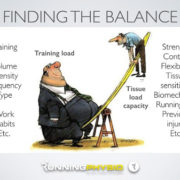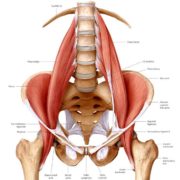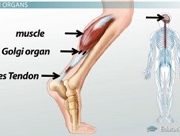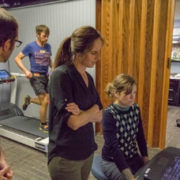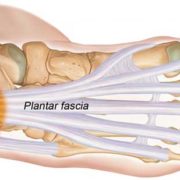By: John Fiore, PT
Sapphire Physical Therapy
The sun appeared today and the thermometer reached 40 degrees Fahrenheit (ed. note: this was written last week!). Warmer temperatures and sp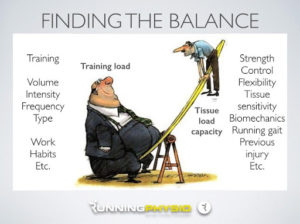 ring racing commitments result in a rapid increase in running intensity and distance. Winter legs accustomed to skiing and indoor gym workouts lack the repetitive loading rates which occur while running. Avoid a hamstring injury by avoiding the temptation to rapidly increase your running speed and-or mileage without proper training. A useful concept is Training Load Versus Tissue Capacity. Strength training and progressive tissue loading-specific exercises should be included in regular winter workouts to build hamstring tissue load capacity as we transition from winter sports back to road and trail running miles.
ring racing commitments result in a rapid increase in running intensity and distance. Winter legs accustomed to skiing and indoor gym workouts lack the repetitive loading rates which occur while running. Avoid a hamstring injury by avoiding the temptation to rapidly increase your running speed and-or mileage without proper training. A useful concept is Training Load Versus Tissue Capacity. Strength training and progressive tissue loading-specific exercises should be included in regular winter workouts to build hamstring tissue load capacity as we transition from winter sports back to road and trail running miles.
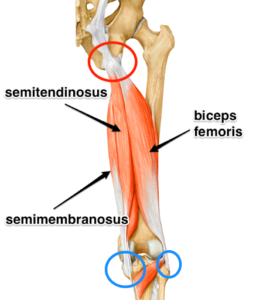 The hamstring is an important and complex, two-joint (crosses both the hip and the knee joints) muscle group used in running. While hamstring pulls and strains are common in runners and often healed with rest, proximal hamstring overuse injuries and traumatic hamstring muscle pulls can be painful and difficult to treat with rest alone. Repetitive micro-trauma in the hamstring attachment at the ischial tuberosity of the pelvis may result in tendinopathy (acute tendinitis or chronic tendinosis) and pain. While proper diagnostic testing is key (clinical testing by an experienced physical therapist or by a sports orthopedic physician), insufficient or improper treatment of proximal hamstring tendinosis may result in a season-ending injury. As with most running injuries, gradually increasing training volume and tissue loading is great way to reduce injury risk.
The hamstring is an important and complex, two-joint (crosses both the hip and the knee joints) muscle group used in running. While hamstring pulls and strains are common in runners and often healed with rest, proximal hamstring overuse injuries and traumatic hamstring muscle pulls can be painful and difficult to treat with rest alone. Repetitive micro-trauma in the hamstring attachment at the ischial tuberosity of the pelvis may result in tendinopathy (acute tendinitis or chronic tendinosis) and pain. While proper diagnostic testing is key (clinical testing by an experienced physical therapist or by a sports orthopedic physician), insufficient or improper treatment of proximal hamstring tendinosis may result in a season-ending injury. As with most running injuries, gradually increasing training volume and tissue loading is great way to reduce injury risk.
The hamstring is comprised of three muscles. All three hamstring muscles originate on the ischial tuberosity of the pelvis. The semimembranosus and semitendinosus muscles attach on the medial side of the lower leg (tibia) below the knee. The biceps femoris attaches on the lateral side of the lower leg (tibia) below the knee. The hamstring muscle group works in opposition to the quadriceps muscles. When you are flying down a hill at full speed, quads pounding and quads burning, the hamstrings act as the “brakes” to prevent knee hyperextension and to initiate the push-off phase of running.
The hamstring’s primary function is to flex or bend the knee. The hamstring’s secondary function is to aid in extending the hip. Because the hamstring crosses both the hip joint and the knee joint, it is a key muscle in the running stride.
Strengthening the hamstring in a lengthened state (eccentric) versus a shortened state (concentric) will result in hamstrings which are stronger and more prepared to manage the repetitive loading associated with running fast on flats and descending hills at speed (see exercise examples below). Core strength addressing lower abdominal, hip, gluteal, and lumbar stabilizers in a functional manner will reduce the demand on muscles such as the hamstring. Hamstring-specific strengthening with progressive loading will reduce overuse and associated tissue micro-trauma which leads to injury.
In order to quantify hamstring function, a 2D video running analysis may be indicated to determine how you as an individual run. Are you using your gluteus maximus to extend your hip, or is the hamstring acting as the primary mover? Are you over-striding and placing increased tension through the hamstring? A 2D video running analysis is a useful way to detect additional underlying running compensations in the clinic which may influence running biomechanics and resulting hamstring tissue loading.
Finally, do not forget self-care such as adequate recovery, sleep, hamstring release techniques, and eccentric hamstring exercises throughout the year to maximize your tissue load capacity. The exercises listed below are for example only. I recommend seeing a physical therapist to develop an effective hamstring-specific loading exercise program suited to your unique strengths, underlying weaknesses, and running goals. Call or email John and the PT staff at Sapphire PT with any questions or to schedule a consultation (406-549-5283 or john@sapphirept.com).
Hamstring Loading Exercises to Increase Tissue Load Capacity:
 1. Glut Bridging Progression: Contract your glutes (glute max) together and hold the contraction and lift into a bridge position, holding for 5 seconds. Slowly return to starting position and repeat for one minute. Further challenge yourself by repeating glut bridging exercise with the addition of single leg marching or single leg bridging without allowing your pelvis to drop. Additional progression includes the addition of a Swiss Ball beneath your heels.
1. Glut Bridging Progression: Contract your glutes (glute max) together and hold the contraction and lift into a bridge position, holding for 5 seconds. Slowly return to starting position and repeat for one minute. Further challenge yourself by repeating glut bridging exercise with the addition of single leg marching or single leg bridging without allowing your pelvis to drop. Additional progression includes the addition of a Swiss Ball beneath your heels.
2. Step-downs: Stand on a box or step (begin with a 4-inch box and progress to taller box over time) with a pole for balance assistance as needed. Step down slowly while maintaining alignment through the pelvis, knee, and foot. Increase hamstring loading by landing further forward and by increasing the box or step height. Practice landing quietly “like a cat” to decrease impact loading.
 3. Quadruped Plank: Add a single leg lift (hip extension) while maintaining a level back-pelvis. May be modified by resting on your forearms.
3. Quadruped Plank: Add a single leg lift (hip extension) while maintaining a level back-pelvis. May be modified by resting on your forearms.
4. Eccentric Hamstring Treadmill Stepping: Set treadmill to the slowest speed. Face backward on the treadmill and hold the hand rails. The support side (the left leg shown) is  placed off of the treadmill belt. The exercising leg (the right leg shown) is placed on the belt. Slowly resist the forward motion of the belt with one leg as the belt moves. The exercising leg then is moved back to the starting point by flexing the knee and extending the hip.
placed off of the treadmill belt. The exercising leg (the right leg shown) is placed on the belt. Slowly resist the forward motion of the belt with one leg as the belt moves. The exercising leg then is moved back to the starting point by flexing the knee and extending the hip.
5. Forward Glider Disc Lunge: Stand with exercising foot on a glider disk (use poles or counter support as needed). Slowly slide foot of exercising leg forward and slowly allow your knee so straighten slightly (do not fully extend your knee or you may do the splits) while avoiding excess hamstring tension. Return to original position and repeat.
6. Nordic Hamstring Curls: Kneel in an upright posture and have a second person hold your lower legs and ankles against the ground (or you may hook your heels beneath a stationary bar). Place hands in front of body and slowly lower towards the floor as shown without excessive hamstring tension. Slowly return to starting tall kneeling position.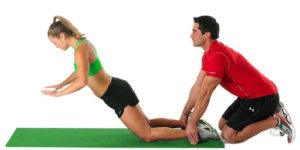
Photo: http://prohealthphysio.com.au/exercises/nordic-hamstring-curl/
References:
1. Cushman, D.; Rho, M., Conservative Treatment of Subacute Proximal Hamstring Tendinopathy Using Eccentric Exercises Performed With a Treadmill: A Case Report. Journal of Orthopaedic & Sports Physical Therapy 2015, 45 (7), 557-562.
2. Fredericson, M.; Moore, W.; Guillet, M.; Beaulieu, C., High hamstring tendinopathy in runners: Meeting the challenges of diagnosis, treatment, and rehabilitation. Physician and Sportsmedicine 2005, 33 (5), 32-43.
3. Finding the balance photo: https://blogs.bmj.com/bjsm/2016/04/11/balancing-training-load-and-tissue-capacity/

